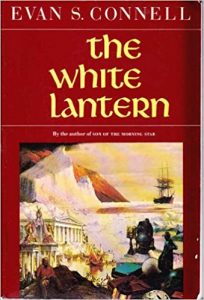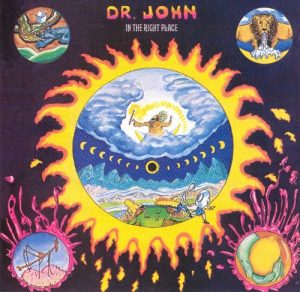The White Lantern
Book written by Evan S. Connell
I haven’t decided yet how much I want the author to intrude into the text when writing non-fiction. That probably means that I never will decide. For that matter, I’m not too excited when the author overtly comments on the action in a work of fiction.
But I am being disingenuous. On the traditional proscenium stage, the actors are surrounded on three sides with the audience composing the fourth. If any of the cast come out of character and address the audience, it is called “breaking the fourth wall.” Think of Romeo and Juliet– the idea goes way back. Dobie Gillis and Moonlighting and many more television shows have utilized this conceit. We take it for granted in documentaries without thinking too hard about the fact that the onscreen host is not actually talking to us as part of his true experience. There is an aspect of pretending for him and for us.
So, truth be told, I probably care less about the intrusion of the artist in the work that I thought. The problem only arises when I notice and feel jarred out of the consumption of the art.
Then, there is non-fiction, running the gamut from memoir through scientific journal writing. We expect a certain amount of verisimilitude when that book wrapper bears a non-fiction imprint. While we might forgive the intrusion of an individual point of view, we are less likely to forgive opinion defrocking the facts.
When I started haunting the science and history sections of the library, I tended to read anything that caught my eye. Connell was a successful author and his publisher did a good job packaging his non-fiction. I noticed them and became absorbed by the wide range of subjects covered.

In The White Lantern and The Aztec Treasure House,
Connell wrote about the details and characters that floated around the edges of other history books. This was before easy access to weird history and the lunatic fringe. Connell’s thesis was the stutter and stumble that marked human progress, but he illustrated it with the sorts of stories that felt like you had curled up with Fox Mulder. Everything was not weird (and most was pretty much human nature), but the presentation would have fit right in with a flashlight and a big sheet.That’s always been the big picture commentary of the best art about the weird: presentation and point of view are everything. Ultimately, that is true of all human endeavor- it is the difference between a colonist and an invader.
Connell intrudes in his essays with personal commentary about how certain incidents are playing out again at the time of his writing. Re-reading him, that time of writing has also become history. The cycles that he highlights have had the opportunity to return yet again. The comments of the moment are once again spoken to an audience that the artist never really envisioned.
What’s it all about?
You’ve Got to Check This Out is a blog series about music, words, and all sorts of artistic matters. It started with an explanation. 94 more to go.
New additions to You’ve Got to Check This Out release regularly. Also, free humor, short works, and poetry post irregularly. Receive notifications on Facebook by friending or following Craig.
Images may be subject to copyright.
